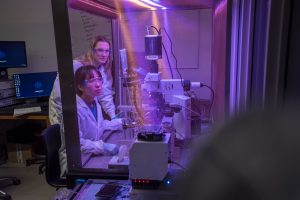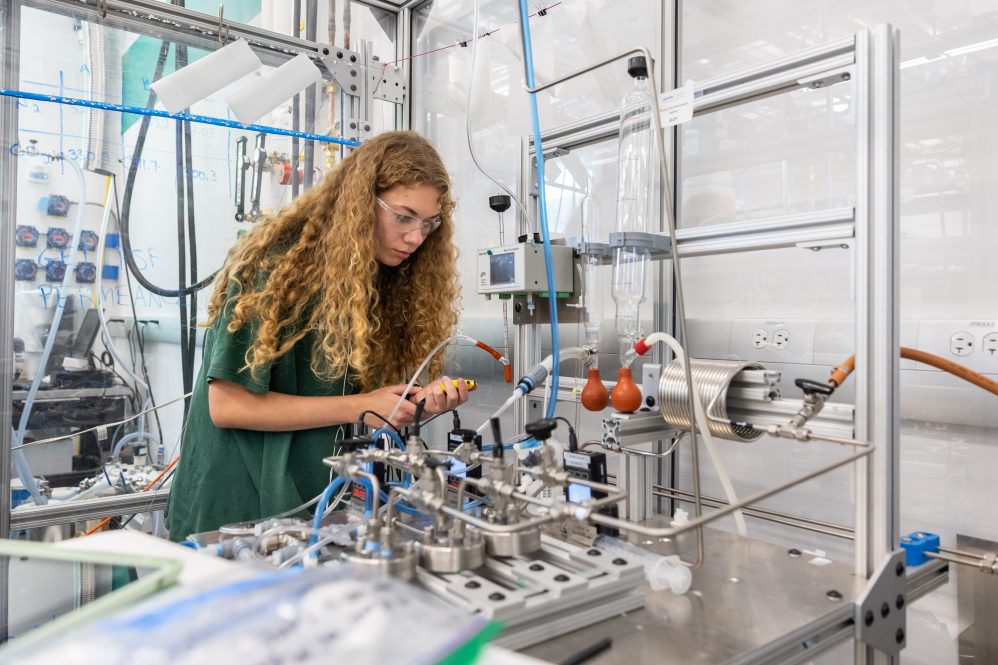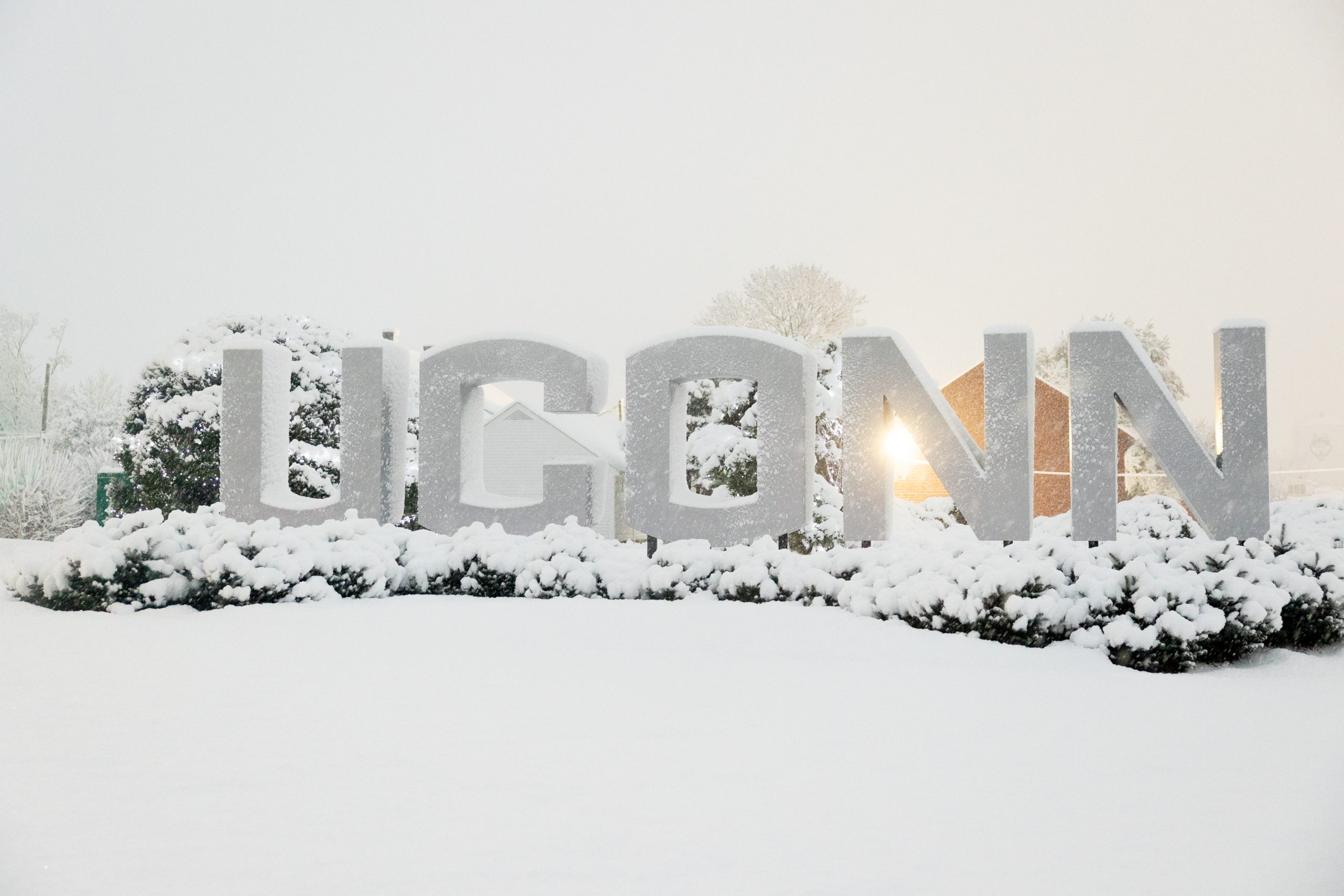UConn investigators won $367 million in awards in the 2024 fiscal year, an increase of $45 million over 2023 and a major step in the University’s strategic plan goal of surpassing the $500 million mark.

In addition, 2024 expenditures – a critical metric used to assess research productivity at colleges and universities nationwide – reached $342 million, setting a UConn record.
The increases in research awards and expenditures are tangible evidence of UConn’s depth and breadth of expertise, its strength in innovation, its excellence in research, and its commitment to our communities. In fact, UConn’s faculty members are dedicated to addressing some of the most daunting challenges of our lifetime and research funding makes their work possible.
“We are developing a deeper understanding of issues such as grid resiliency, responsible energy consumption and production, health across the lifespan, cybersecurity, human rights, sustainability, and much more,” says Pamir Alpay, Vice President for Research, Innovation, and Entrepreneurship. “And, we have the capacity to make a profound difference for generations to come.”
In a highly competitive funding landscape, UConn stands out for the quality of its faculty and the excellence of its research infrastructure, which benefited from significant investments by the State of Connecticut, including the new Science 1 research and educational facility. These assets have allowed UConn to build interdisciplinary collaborations and forge strong partnerships with businesses and industry, both of which are critical to sustaining research over the long term.
“Our research success is not coincidental,” Alpay says. “We have purposefully strategized our growth to leverage existing strengths in areas such as the environment, materials and manufacturing, education, human rights, and health and life sciences and to build our capabilities through investments in faculty, infrastructure, and core centers and institutes. The result is a more prominent national profile and the ability to recruit and retain outstanding faculty and students, who, in turn, help build UConn’s research enterprise.”

“Our research initiatives have elevated all aspects of the University, including undergraduate education, sustainability, community service, innovation and entrepreneurship, and quality of health care at our hospital and clinics across the state.” says UConn President Radenka Maric. “Through our research programs, UConn directly contributes to the environmental, economic, and social vitality of the state and to the well-being and quality of life of Connecticut’s citizens.”
In an example of research funding driving programs that address real-world problems, UConn recently secured a $10 million grant from the Environmental Protection Administration to become the New England region’s Environmental Justice–Thriving Communities Technical Assistance Center (EJ-TCTAC). One of 17 regional centers selected in partnership with the U.S. Department of Energy, EJ-TCTAC will build capacity in New England in underserved and rural/remote communities to address environmental and energy justice concerns, serving as a resource and technical assistance hub. The program will provide technical assistance services, education, outreach and community engagement on environmental quality and health, energy justice, climate adaptation, and civic justice.
UConn’s public mission is a key to its success. “As a public university, our mission is to advance knowledge in service of the public welfare,” says Alpay. ” Research teams across our campuses engage with individuals and communities to understand and address the challenges they face. Community connections shape our research programs and deliver answers where they’re needed. Our work in community resilience in response to climate change, our public policy efforts, and our engagement with industry in support of economic development are good examples.”
Among the most prominent of UConn’s efforts linking research, innovation, and public service is QuantumCT, a collaboration led by UConn and Yale in collaboration with state government, business, and community leaders that aims to make Connecticut an engine for economic development fueled by innovations in quantum technologies and to bring opportunity to communities. UConn and Yale received a National Science Foundation Regional Innovation Engine Development Award in 2023 to start building the QuantumCT innovation engine.
“Pioneering research is one of the main differentiators between great universities and good universities,” says Maric, a noted researcher in clean energy engineering. “The continued upward trajectory of UConn Research’s funding shows the respect that our faculty have around the world.”

The increase in awards comes at a time when the University’s research strength is being recognized in other ways, from early career faculty awards to senior faculty being elected members of prestigious societies. In addition, UConn and UConn Health consistently have multiple faculty members named to the annual Web of Science Highly Cited Researchers List, including five in 2023. The list recognizes researchers whose publications ranked in the top 1% by citations for their field and year of publication, demonstrating significant research influence among their peers.
Research is also key to the quality of education we are able to provide our students. Because UConn’s faculty are leaders in their fields, they prepare their students to meet the world’s emerging challenges. In part because of research excellence, UConn attracted the highest number of applications for admission to its freshman class in its history, including 148 valedictorians or salutatorians.
“And while I am glad to see the year-over-year success of UConn Research, we are not resting on our laurels,” says President Maric. “We have a goal of $500 million in research funding, and we intend to meet – and surpass – that goal.”



